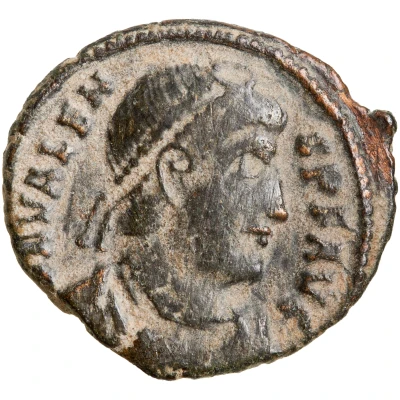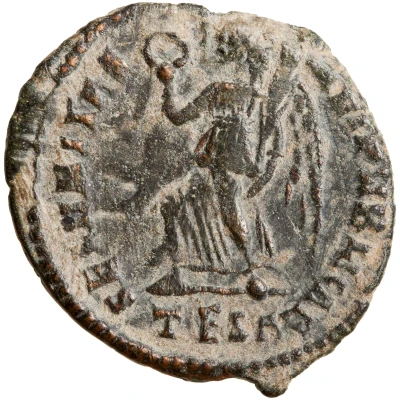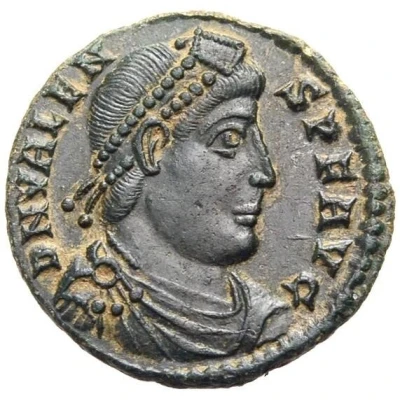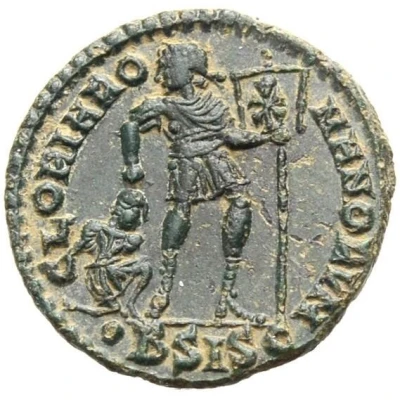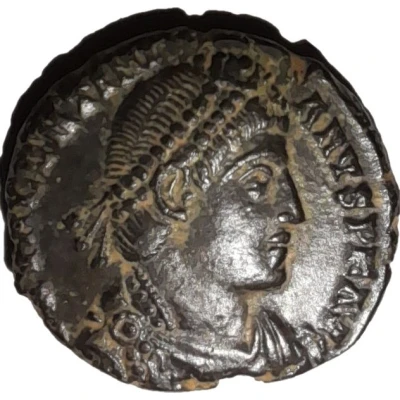
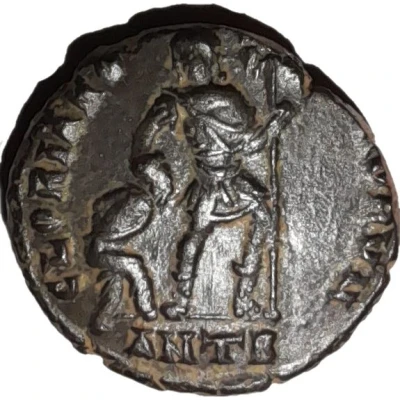

© pimmy (CC BY-NC-SA)
Follis - Valentinianus I GLORIA ROMANORVM; captive; Antioch
| Bronze | 2.5 g | 15 mm |
| Issuer | Rome › Roman Empire (27 BC - 395 AD) |
|---|---|
| Emperor | Valentinian I (364-375) Valens (364-378) |
| Type | Standard circulation coin |
| Years | 364-375 |
| Value | Follis (1⁄180) |
| Currency | Solidus, Reform of Constantine (AD 310/324 – 395) |
| Composition | Bronze |
| Weight | 2.5 g |
| Diameter | 15 mm |
| Shape | Round (irregular) |
| Technique | Hammered |
| Orientation | Variable alignment ↺ |
| Demonetized | Yes |
| Updated | 2024-10-04 |
| Numista | N#29553 |
|---|---|
| Rarity index | 79% |
Reverse
The emperor walking right, holding labarum in his left hand and dragging a captive behind him with his right hand.
Script: Latin
Lettering:
GLORIA ROMANORVM
ANTH
Translation: To the glory of the Romans
Interesting fact
One interesting fact about the Follis - Valentinianus I coin is that it features a captive on the reverse side, which was a common motif in Roman coinage during the 4th century. The captive is depicted kneeling and bound, with their hands tied behind their back, symbolizing the power and dominance of the Roman Empire. This imagery was used to convey the idea that the Roman Empire was strong and victorious, and that its enemies were defeated and subjugated. The use of captives on coins also served as a way to commemorate military victories and to promote the idea of Roman supremacy.
